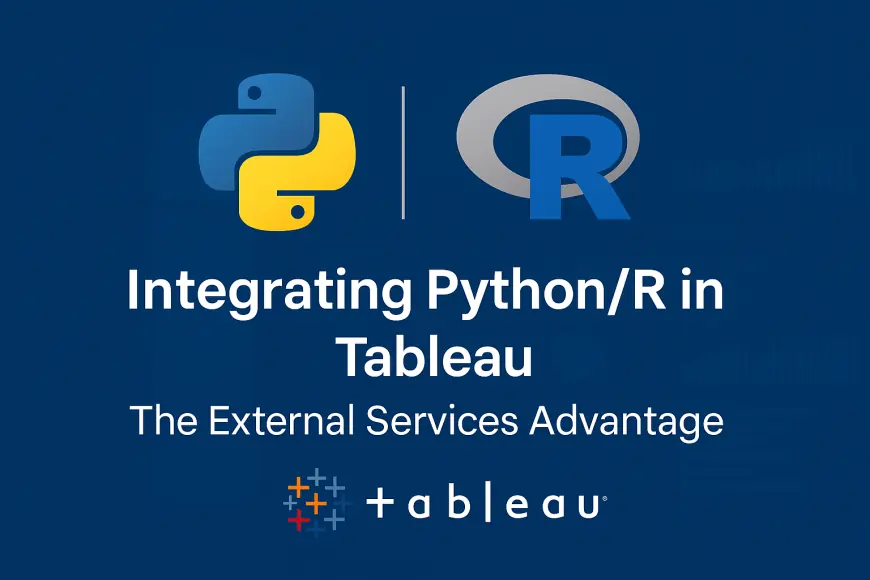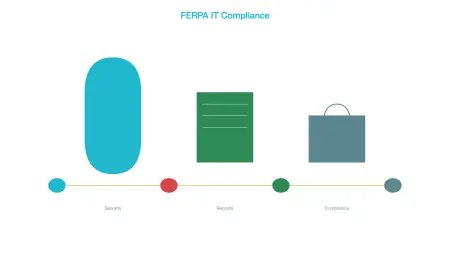Integrating Python/R in Tableau: The External Services Advantage
Unlock advanced analytics in Tableau by integrating Python and R. Learn how Tableau’s External Services feature empowers developers to perform predictive modeling, machine learning, and statistical analysis—all within your dashboards.

In today's data-driven world, organizations are looking beyond traditional BI dashboards. They want smarter, predictive, and AI-powered insights. This is where Tableau, combined with the power of Python and R, offers an incredible advantage. With Tableau External Services integration, businesses can extend the platform’s analytical capabilities to include machine learning, statistical modeling, and advanced data manipulation—directly inside Tableau dashboards.
In this guide, we’ll explore how hiring Tableau developers skilled in Python or R gives your business a competitive edge in analytics and decision-making.
Why Integrate Python or R in Tableau?
While Tableau is excellent for visualizations and business intelligence, it has some limitations in:
-
Complex statistical operations
-
Predictive modeling
-
Text analytics and NLP
-
Real-time algorithm-based decision-making
Integrating Python (via TabPy) and R (via Rserve) with Tableau allows developers to:
-
Run complex scripts on Tableau data
-
Deploy ML models and display results in dashboards
-
Enable interactive, dynamic, and predictive visualizations
How External Services Work in Tableau
Tableau uses SCRIPT functions to communicate with external analytics engines. Developers can write Python or R code within calculated fields using:
-
SCRIPT_REAL(), SCRIPT_INT(), SCRIPT_STR(), and SCRIPT_BOOL()
-
These functions allow Tableau to pass values to external services and return the output directly into your visualizations.
Example: Predictive Forecasting Using Python
SCRIPT_REAL(
"import numpy as np
import pandas as pd
from sklearn.linear_model import LinearRegression
model = LinearRegression()
model.fit(_arg1.reshape(-1,1), _arg2)
return model.predict(_arg1.reshape(-1,1))",
[Sales], [Year]
)
Key Use Cases of Tableau + Python/R Integration
1. Predictive Analytics
Use scikit-learn or R models to predict sales trends, churn rates, or customer lifetime value.
2. Anomaly Detection
Identify outliers in financial data, server logs, or product returns using custom algorithms.
3. Sentiment Analysis
Run NLP models using Python’s NLTK or spaCy to analyze customer reviews in Tableau dashboards.
4. Statistical Tests
Use R to run A/B tests, regression analysis, or significance testing directly inside Tableau.
5. Real-Time Decision Making
Deploy ML models that react to filter changes, user inputs, or parameter shifts in real-time.
Why You Should Hire Tableau Developers Skilled in Python or R
Tableau developers with Python/R experience bring:
-
The ability to blend data storytelling with machine learning
-
Hands-on experience with TabPy and Rserve integration
-
Skills in deploying predictive and prescriptive models
-
Optimization of Tableau Prep flows using external scripts
-
Scalability of analytics projects using open-source libraries
These developers not only build dashboards—they deliver intelligent, decision-ready insights.
Security & Performance Considerations
-
Always run TabPy or Rserve on secure, encrypted networks.
-
Limit user permissions when deploying models.
-
Use Tableau Server’s governance features to manage script execution.
-
Avoid overloading dashboards with heavy ML models—offload pre-processing where possible.
Real-World Example
A retail company integrated Python models into Tableau to forecast inventory needs ba
sed on regional sales and seasonal demand. With this setup:
-
Out-of-stock rates dropped by 23%
-
Predictive accuracy improved by 35%
-
Tableau dashboards became strategic tools for demand planning
Final Thoughts
Tableau’s integration with Python and R bridges the gap between business intelligence and data science. Whether you're building forecasting tools, sentiment dashboards, or anomaly detection systems—Tableau External Services empowers your team to go beyond descriptive analytics.
If you're looking to hire dedicated Tableau developers, prioritize those who can harness the power of Python and R to turn data into smart, predictive insights.
What's Your Reaction?
 Like
0
Like
0
 Dislike
0
Dislike
0
 Love
0
Love
0
 Funny
0
Funny
0
 Angry
0
Angry
0
 Sad
0
Sad
0
 Wow
0
Wow
0

















































